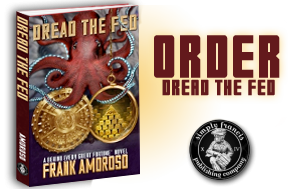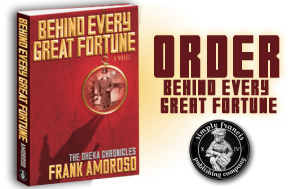Remembering Otto Hermann Kahn, One of Long Island’s Stellar Citizens©
By Frank Amoroso*
February 2014
This Friday, February 21st, marks the anniversary of the 147th birthday of one of Long Island’s most famous, yet all but forgotten, citizens. During his life, Otto Hermann Kahn was hailed as the “King of New York.” The New York Times called him the “Man of Velvet and Steel.” He was a renowned financier, impresario and philanthropist. When he wasn’t testifying in Congress about the complexities of international banking or the financing of railroad infrastructure projects, he was meeting with political leaders devising Presidential campaign strategies. During his life, presidents and monarchs vied for his attention and he held the destinies of nations in his grip. Otto Kahn knew and interacted with many of the most famous and powerful people of his time. French Prime Minister Clemenceau praised Kahn as the greatest living American.
Appearing on the cover of Time magazine in 1925, Otto Kahn was the first celebrity banker. His renown eclipsed the notoriety of current-day figures like Donald Trump and Jay-Z combined. As chairman of the Metropolitan Opera, he brought such world-class talent as Enrico Caruso, Arturo Toscaninni, Vaslav Nijinsky and Anna Pavlova to the New York stage. His gift of showmanship and flair for the dramatic created a worldwide reputation for wealth and grace.
Otto Kahn was born in Manheim, Germany to a middle class family that imbued their children with love of music and art. Following the family motto of “Immer Rastlos Voram,” (Ever Restlessly Forward) Otto relocated to New York City. As chairman of the Metropolitan Opera, Otto channeled his love of music and the performing arts into great artistic and monetary success by recruiting world class talent.
By virtue of his personal charm and often the power of his personal checkbook, Kahn secured the services of Giulio Gatti-Casazza and Arturo Toscanini from La Scala in Milan. Mr. Kahn knew the value of star power and brought the premier tenor of the century, Enrico Caruso, to the New York stage where he became a rockstar, becoming the first performer to sell over one million recordings. New Yorkers were dazzled when Otto Kahn brought the world’s greatest ballet dancers, Vaslav Nijinsky and Anna Pavlova, here. Other luminaries followed and the Met became the most prestigious Opera house in the world.
In addition to scouring the world for talent, Mr. Kahn used his own considerable fortune to support struggling artists. His generosity earned him the appellation of Maecenas after an ancient Roman noble for the ideal of the generous, enlightened patron of the arts who supported men of creative genius for the advancement of society. Kahn’s patronage extended to all the performing arts and areas of culture. He provided financial support for groups as diverse as the avant-garde Provincetown Playhouse on Cape Cod and Eva LeGallienne’s Civic Repertory Company to the Ballet Russe, Stanislavsky’s Moscow Art Theatre and Max Reinhardt’s Repertory Company.
Otto Kahn was a bon vivant who constantly entertained celebrities and dignitaries. Otto’s image as the personification of debonair sophistication in top hat and tails inspired the creators of Monopoly® to adopt him as the game’s symbol. His penchant for the quirky and opulent made him a staple of the Society and Gossip columns. Luminaries like Teddy Roosevelt, Enrico Caruso, Charlie Chaplin graced lavish affairs hosted by Kahn at his Gold Coast mansion overlooking Cold Spring Harbor.
Mr. Kahn’s influence extended to the nascent film industry. He financed the Paramount Studios. Notably, the classic film, Citizen Kane was filmed at Oheka Castle. Rumor has it that F. Scott Fitzgerald based the character Jay Gatsby in his masterpiece the Great Gatsby on Otto Kahn. The zany Marx Brothers parodied Otto Kahn as the hare-brained millionaire in the movie Animal Crackers.
When Otto Kahn completed Oheka Castle in 1919, it was called “the finest country estate in America.” Oheka was the second largest private residence in the United States, surpassed in size only by the Biltmore in North Carolina. The name for his mansion was Oheka Castle, an acronym for his name Otto Hermann Kahn. The mansion was over one hundred thousand square feet and had over one hundred and twenty-six rooms, all tastefully furnished.
Oheka included fountains, formal estate gardens and reflecting pools reminiscent of the finest palaces in Europe. It was designed by the landscape architect Frederick Law Olmsted, Jr. the visionary who designed of New York’s Central Park. Oheka boasted its own golf course, designed by world renowned golf architect Seth Raynor as a traditional links course, greenhouses, a nursery, stables and even a landing strip for aero planes.
At the end of the twentieth century, Oheka Castle lay abandoned and was a decrepit shell of her former opulence that was as forgotten as the man whose fortune built it. Thanks to the efforts of local developer, Gary Melius, Oheka Castle has been restored to its former majesty. It currently operates as a beautiful venue for weddings and other special celebrations. Oheka Castle stands as a reminder of Long Island’s opulent past and a tribute to Otto Hermann Kahn, the Monopoly® guy.
*Frank Amoroso has just released his historical novel, Behind Every Great Fortune™ that chronicles the life and times of Otto Hermann Kahn during the turbulent second decade of the 20th century. Email him at Frank@BehindEveryGreatFortune.com

















